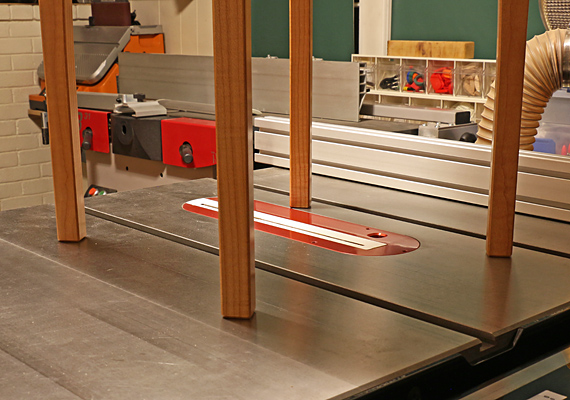
In theory, the bottom tips of all four legs of a table should be in the same plane so it can sit on a flat floor without wobbling. Remember, however, the words of Yogi Berra, “In theory, there is no difference between theory and practice. In practice, there is.”
Now, if you made uniform leg lengths and mortise-and-tenon positions, you should have a flat base after assembly that requires no adjustment but stealth gremlins almost always prevent such perfection.
On the other hand, consider that rarely is a floor flat over the area on which the table stands, so making the four legs true is really just playing the odds. Furthermore, a table, especially a large one, may flex when you place it on the floor to produce an automatic correction. The same goes for chairs. Therefore, all of this is often of no concern at all – in practice.
For a small table though, this issue may be a significant concern. The small area of floor on which it stands may indeed be flat, the table may not flex much, and it feels creepy when it wobbles a lot. So, let’s look at how to assess this.
It is best to do this with the top attached in its final configuration, which contains any flex in the frame induced by the top piece.
The simplest method is to put the small table on a true flat surface such as the table saw. If such as surface is not available, you can turn the table upside down and use winding sticks on the tips of the legs. Note that this may introduce error if the frame of a larger table flexes a bit differently than when it is right side up. In any case, for a larger table, I do not go hunting for a very flat floor, which probably does not exist; I just do not worry about the whole matter.
For small tables, I do like to get it pretty close. You can take off the error from the one long leg, as determined by how the table pivots on the flat reference surface, but I prefer to take off half that amount from each of the two long legs.
OK, if you have done everything just right in the shop and now place the table on the floor where it will live, which is not likely to be flat, and it wobbles enough to be annoying, what do you do? Shim it. A layer or two or more of tape such as duct tape is just fine – in theory and in practice.


Just dealt with a small side table the other day that had the annoying wobbling. It would be nice if there was some sort of self adjustable pads that one could stick under the legs and they would “feel” the pressure difference and self adjust accordingly. Kind of like what memory foam does.
Pascal,
PSA memory foam leveling tape. Uh oh, sounds like you have an invention! Maybe it exists in some form now. Good idea.
Rob
Are screws in the endgrain an option? They could be hidden flush unless one is needed to protrude slightly to level the table.
Hi Dan,
Makes sense (in theory!). Good idea! Would need a screw in each of two adjacent legs to cover all situations. (They can’t make a leg shorter, so it’s not like the usual screw levelers where only one is needed.) But I’d be concerned about scratched wooden floors. And carpets tend to self-level the table anyway, so unnecessary there. Hey, how about a nylon screw (inserted after pre-threading with a steel screw)? Could work, I think.
Thanks,
Rob